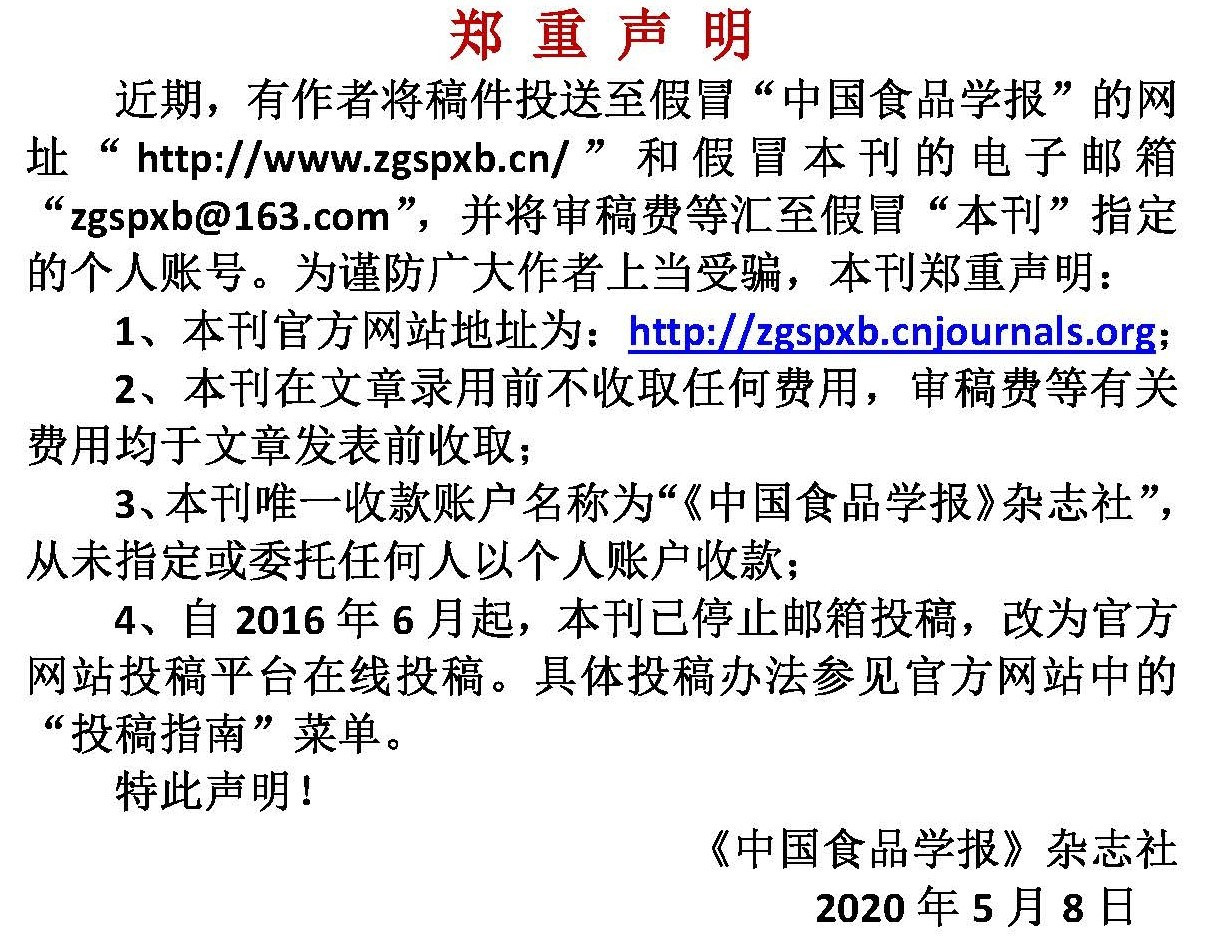牡蛎捕后贮运过程中的活力和呈味特性
作者:
作者单位:
(大连海洋大学食品科学与工程学院 辽宁大连 116023)
作者简介:
通讯作者:
中图分类号:
基金项目:
国家重点研发计划项目(2018YFD0901001);辽宁省教育厅青年科技人才“育苗”项目(QL202008)
Vigour and Taste Characteristics of Crassostrea gigas during Post-harvest Storage and Transportation
Author:
Affiliation:
(College of Food Science and Engineering, Dalian Ocean University, Dalian 116023, Liaoning)
Fund Project:
引用本文
闫丽新,殷中专,蔡琰,刘俊荣,徐昙烨,田元勇.牡蛎捕后贮运过程中的活力和呈味特性[J].中国食品学报,2022,22(12):224-233
复制分享
文章指标
- 点击次数:
- 下载次数:
- HTML阅读次数:
历史
- 收稿日期:2021-12-15
- 最后修改日期:
- 录用日期:
- 在线发布日期: 2023-01-09
- 出版日期:
文章二维码

版权所有 :《中国食品学报》杂志社 京ICP备09084417号-4
地址 :北京市海淀区阜成路北三街8号9层 邮政编码 :100048
电话 :010-65223596 65265375 电子邮箱 :chinaspxb@vip.163.com
技术支持:北京勤云科技发展有限公司
地址 :北京市海淀区阜成路北三街8号9层 邮政编码 :100048
电话 :010-65223596 65265375 电子邮箱 :chinaspxb@vip.163.com
技术支持:北京勤云科技发展有限公司
